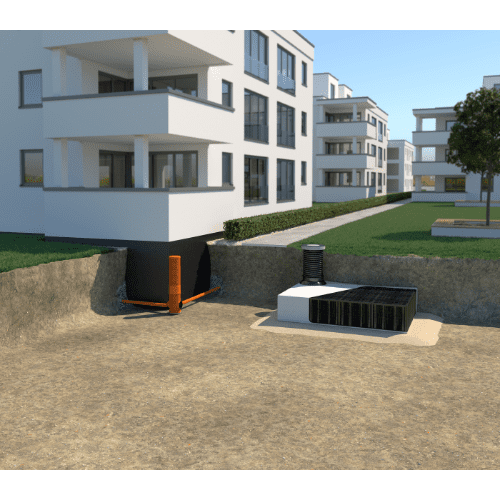
TRICEL NERO RANGE - STORMWATER MANAGEMENT
Underground drainage system
Home » Stormwater » Underground Drainage System
- May 1, 2024
An underground drainage system comprises pipes, channels, and structures intended to gather and transport surplus water from rainfall, surface runoff, and other origins, diverting it from urban or developed regions.
Its primary function is to mitigate flooding, erosion, and waterlogging by effectively channeling stormwater to suitable outlets such as rivers, lakes, or treatment facilities.
Discover the Tricel Nero Range that contains two solutions: Tricel HydroStor and Tricel Rigofill, and considerations for your project.
Type of Underground drainage system
In this article, we’ll compare two underground drainage systems from the Tricel Nero range.
hydrostor
HydroStor, developed by Tricel, is a modular stormwater storage system featuring high-density polyethylene (HDPE) chambers that interconnect seamlessly to create underground storage structures. This design maximizes storage capacity while minimizing required footprint space.
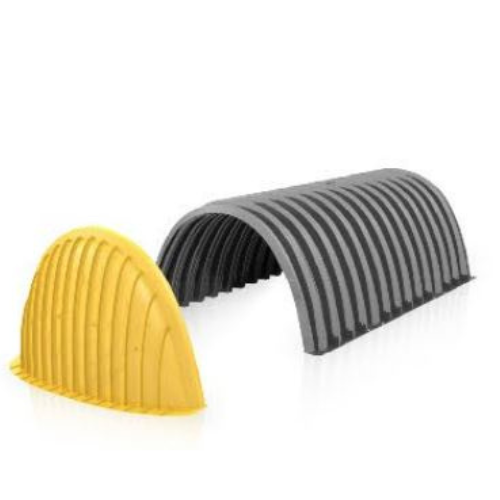
Key Features of Tricel Hydrostor
Modular Design
HydroStor’s modular design offers flexibility to adapt to diverse site requirements. Installers can customize the size and layout of the storage system to meet specific project needs.
High Capacity
These chambers boast substantial stormwater storage capabilities, effectively easing strain on drainage systems during periods of heavy rainfall.
Durability
Crafted from HDPE, HydroStor chambers are corrosion-resistant and engineered to endure the demands of underground installation.
Easy Installation
With comprehensive installation instructions provided, assembling HydroStor chambers on-site is efficient, lowering labour expenses and installation durations.
Rigofill
Rigofill is an innovative stormwater attenuation system that diverges from conventional concrete tanks by employing lightweight plastic modules, which are straightforward to transport and install.
The system is meticulously engineered to enhance water infiltration and optimize storage efficiency.
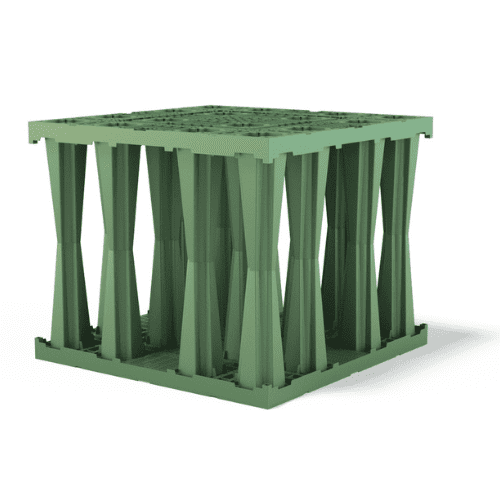
Key Features of Tricel Rigofill
Lightweight Construction
Rigofill modules are crafted from lightweight plastic, facilitating easy handling and transportation to installation sites. This feature simplifies logistics and reduces installation time.
Infiltration Capability
The design of Rigofill encourages water infiltration into the surrounding soil, supporting groundwater replenishment and mitigating surface runoff.
Versatility
Rigofill modules offer flexibility in layout configurations to meet specific site requirements, optimizing space utilization effectively.
Environmental Benefits
By promoting infiltration and groundwater recharge, Rigofill contributes to maintaining natural hydrological cycles and fostering sustainable urban development practices.
Main differences between these 2 Underground drainage system
1. Material: Hydrostor utilizes HDPE chambers known for their durability and corrosion resistance. In contrast, Rigofill modules are crafted from lightweight plastic, offering similar robustness and resistance qualities.
2. Installation: Both systems feature straightforward installation processes. Hydrostor’s modular design provides flexibility to adapt to various site constraints effectively.
3. Storage Capacity: Both systems offer substantial storage capacity for stormwater management. Hydrostor’s modular chambers are designed to optimize storage efficiency, potentially offering a more efficient use of space compared to Rigofill modules.
4. Infiltration: Rigofill is specifically engineered to enhance water infiltration into the surrounding soil, making it ideal for projects focused on groundwater recharge and sustainable drainage solutions.
What system to choose for what project ?
Objective:
Tricel Rigofill aims to mitigate floods and manage stormwater volume by temporarily storing runoff. Tricel Hydrostor systems focus on promoting infiltration and groundwater recharge by facilitating the absorption of stormwater into the ground.
Components:
Attenuation systems like Rigofill typically include storage tanks or basins with controlled outlets. Soakaway systems such as Hydrostor consist of underground structures filled with permeable materials to enhance infiltration.
Application:
Attenuation systems are ideal for urban areas with limited space for surface detention ponds. Soakaway systems are suitable for locations with well-draining soils and where promoting groundwater recharge is beneficial.
Articles you might be interested in
- Stormwater
- Case Study
Tricel Nero Range of Products
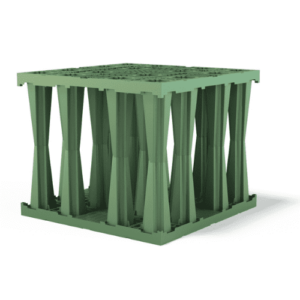
Tricel Crates
The Tricel crate system offers versatile components for the infiltration, retention, and storage of stormwater runoff. Ideal for smaller space/footprint.
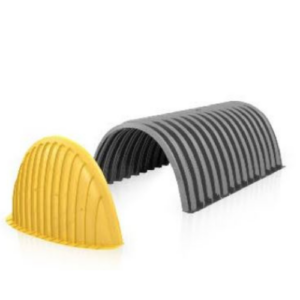
Tricel Chambers
Tricel chambers offer a sustainable underground stormwater management solution that enhances groundwater recharge. Great for sites with a high water table.
50 YEARS IN BUSINESS
A highly successful multinational corporation with over 50 years’ valuable industry experience
STORMWATER MANAGEMENT
Different systems available for all projects. Free advice on request.
Technical Expertise
We have a expert and trained team ready to help your project.
Meet our team
To find a technician in your area, visit our page
TALK STORMWATER MANAGEMENT
To speak to one of our agents online, click here
ASK FOR A QUOTE
Request a free quote today to have a quote that meets your project!
Get in touch
